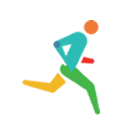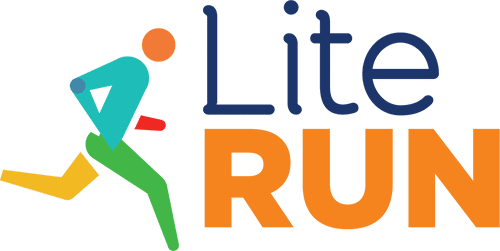Background
The following factors influence the buying decision for a Lite Run Gait Trainer (LR):
- Greater patient safety;
- Greater patient satisfaction;
- Greater Physical Therapist (PT) satisfaction;
- Greater PT safety;
- Increased PT labor efficiency;
- Increased reimbursement from the current patient population; and,
- Expanded patient population.
Increased PT Labor Efficiency

We estimate that IRFs average three cases per day that require a PT + 1 Assistant and one case per day requiring a PT + 2 Assistants. This, along with the VA study data, was used to create the cost benefit analysis presented in Table 1.
Table 1. Cost benefit via increased PT Assistant labor efficiency.*
| PT Hr Saved @ 3 Cases/day x 2 personnel/case x 0.75% reduction | 1.5 |
| PT Hr Saved @ 1 Case/day x 3 personnel/case x 0.75% reduction | 2.25 |
| Hours of PT Assistant time LR saves per day | 3.75 |
| Hourly PT Assistant rate | $58 |
| Daily savings for PT Assistant labor | $218 |
| Annual savings for PT Assistant labor | $54,375 |
Increased Reimbursement From The Current Patient Population
If patient setup time exceeds a billing unit it is not reimbursable. Furthermore, if a patient is ‘done’ sooner than planned, due to fatigue, soreness or great discomfort, reimbursable units are curtailed.
In Lite Run’s Phase I Clinical study2, patient setup time was less than 5 minutes, which compares very favorably to alterative devices, especially exoskeletons that require much more time. It is expected that LR will consistently deliver a reimbursable therapy unit within the first 15 minutes.
Also, the previously cited VA study, LR achieved an approximate 2-fold increase in both the distance traveled and the amount of time in an upright position over harness suspension systems (see the figure below), and reimbursement is duration based.
Figure 2. Mean (± 1 standard deviation) total time spent by patients in an upright position per 60-minute session.

At Medicare’s reimbursement rate of $85/15-minute unit, 2 additional units/day equals $42,500 annually.
Expanded Patient Population
Exclusionary conditions, such as morbid obesity, pressure sores and exceptional frailty, that prevent the use of suspension systems or robotic exoskeletons, do not exclude the use of the LR system. Our estimate of 2 such cases per week at a typical IRF, or 0.4 patients/day was used for the ROI analysis presented in the following table.
Table 2. Annual new revenue via treatment of previously excluded patients.
| New Patients Per Day | 0.4 |
| Reimbursement Revenue @ $340/hr. | $136 |
| PT Labor Cost @ $75/hr. | $30 |
| Net Revenue per day | $106 |
| Net Revenue per year | $27,520 |
Conclusion
Based upon our conservative assumptions, the Lite Run Gait Trainer system’s purchase cost of $98,900 including Exosuits, pays for itself during the first year as summarized in the table below.
Table 3 Annual new revenue to IRFs generated by the Lite Run system.
| PT Assistant Labor Savings | $54,375 |
| Increased Reimbursement units | $42,500 |
| Reduced patient exclusions | $27,520 |
| Total New Annual Revenue | $124,395 |
This analysis does not include the potential cost-saving benefits of reducing the fall risk to patients and reducing the risk of physical therapist injury owing to the device’s sit-to-stand assist capability.
Likewise, this analysis does not quantify the benefit of improved or accelerated therapeutic outcome.


More Information
Send a Message
References
- Koehler-McNicholas SR, Cataldo A, Koch E, et al., Evaluation of a Novel Gait Training Device Using a Pressure Suit to Support Body Weight. ASME. Frontiers in Biomedical Devices, 2018 Design of Medical Devices Conference: V001T03A007, doi:10.1115/DMD2018- 6845.
- Brenteson C, Hauck J, Wigness B, Johnson D., Safety and Feasibility of a Novel Gait Training Device Using a “Spacesuit” to Support Body Weight. ASME. Frontiers in Biomedical Devices, 2017 Design of Medical Devices Conference: V001T05A018, doi:10.1115/DMD2017-3537.
